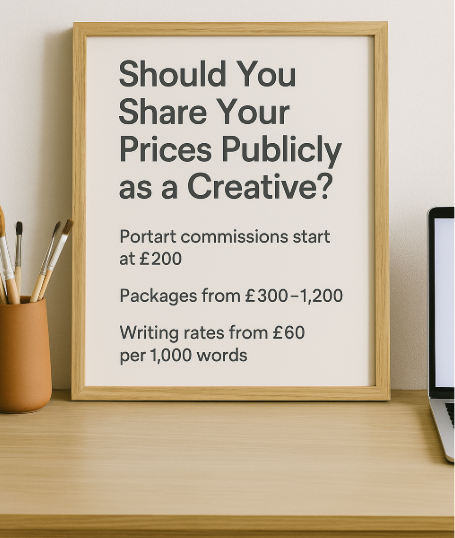Let’s break it down honestly, and with your sanity (and sustainability) in mind.
Why Some Creatives Avoid Public Pricing
- Custom work is complex: Every job is different. One painting might take 10 hours, another 60. A logo for a local café is different from branding for an international startup.
- Fear of sticker shock: You’re worried someone will see your price and scroll away before understanding the value.
- Undercutting & comparison: In a saturated market, it’s hard not to feel exposed—like your worth is being pitted against everyone else’s.
- Negotiation flexibility: Leaving it open allows you to tailor prices to the client’s budget, project scope, or timeline.
But Hiding Your Prices Might Be Hurting You
- Create friction: Clients may not reach out if they have no idea what to expect.
- Waste your time: You may find yourself answering the same questions repeatedly—only to hear “oh, that’s too much.”
- Undermine your confidence: You might be tempted to undersell in private negotiations.
- Signal inexperience: Many clients associate hidden pricing with either being brand new—or being unsure.
What’s the Middle Ground?
You don’t have to list every possible price, but you can still offer guidance. Try:
- “Portrait commissions start at £200”
- “Packages from £300–£1,200”
- “Writing rates from £60 per 1,000 words”
Or post a pricing guide PDF with examples and ranges. Another strategy is a full page explaining how your pricing works—what affects it, and how to start a conversation with you.
